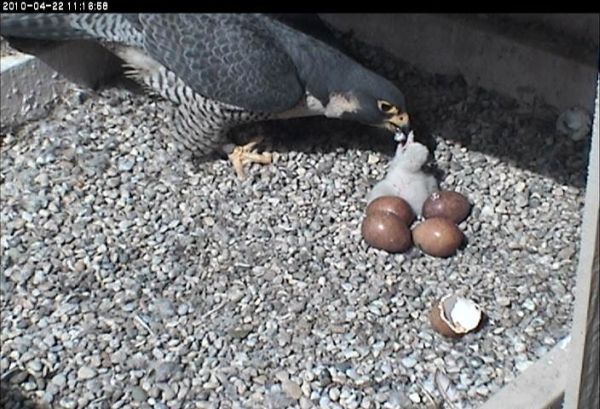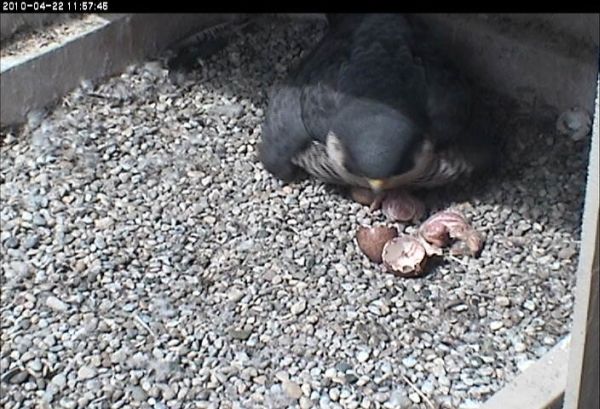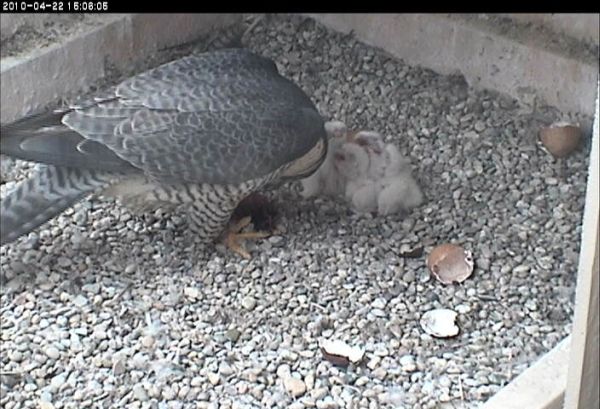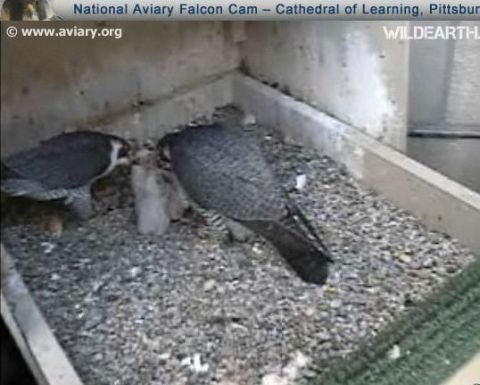
Tonight’s webcam chat was a lot of fun and very informative. Here’s a big thank you to everyone who participated, especially…
- Thank you to Traci (tld) for coordinating the whole thing from inception to reality.
- Thanks to Marianne (jetta), Jennie (mindysmom) and Donna (sno_leopard) who are in the chat every day, greeting everyone and helping with answers and news. Their contributions make the Cathedral of Learning chat a great community.
- Thank you to all of you for posting your excellent questions.
- And a special thanks to Dr. Todd Katzner for sharing his time and knowledge.
And finally, a thank you to Dorothy and E2 for showing us such a heart-warming scene of peregrine family life.
While we were chatting, both adult peregrines brought food to their five chicks for the last feeding of the day. As we watched, Dorothy and E2 fed them together (pictured above). What great parents!
(photo from the National Aviary webcam at the Cathedral of Learning)
 Tonight from 7:00pm-7:30pm, Dr. Todd Katzner will be on the Cathedral of Learning webcam chat to answer your questions about peregrine falcons.
Tonight from 7:00pm-7:30pm, Dr. Todd Katzner will be on the Cathedral of Learning webcam chat to answer your questions about peregrine falcons. 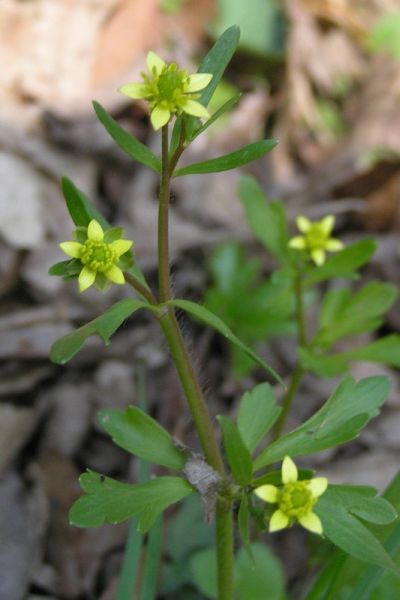
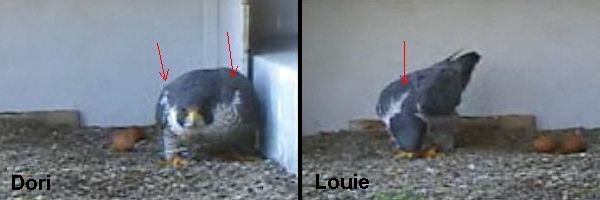
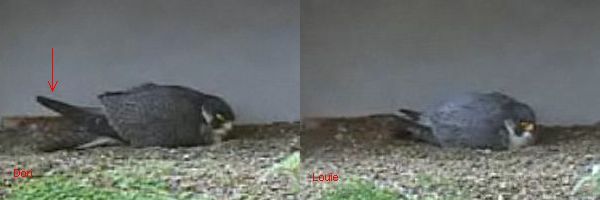
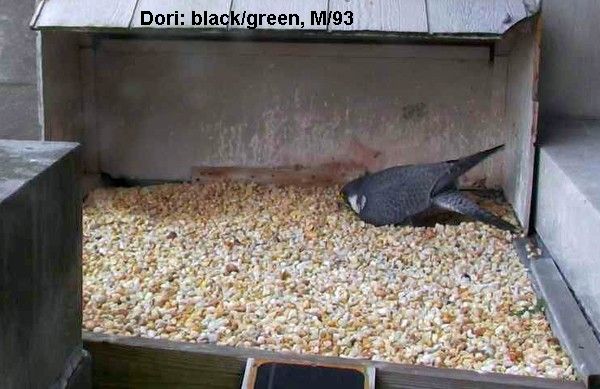
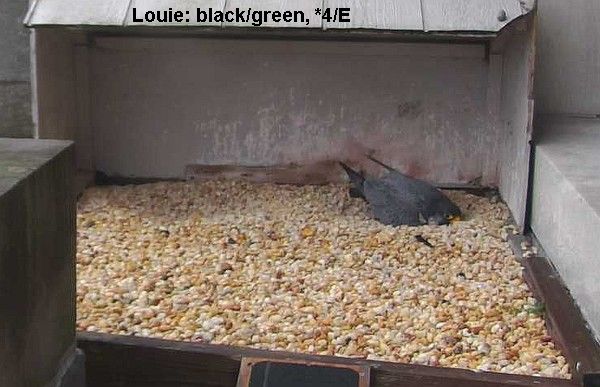
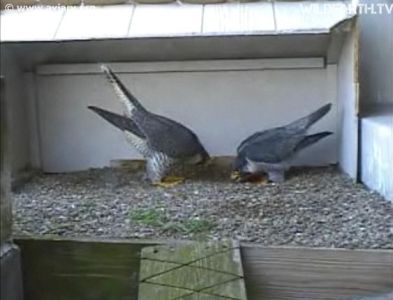



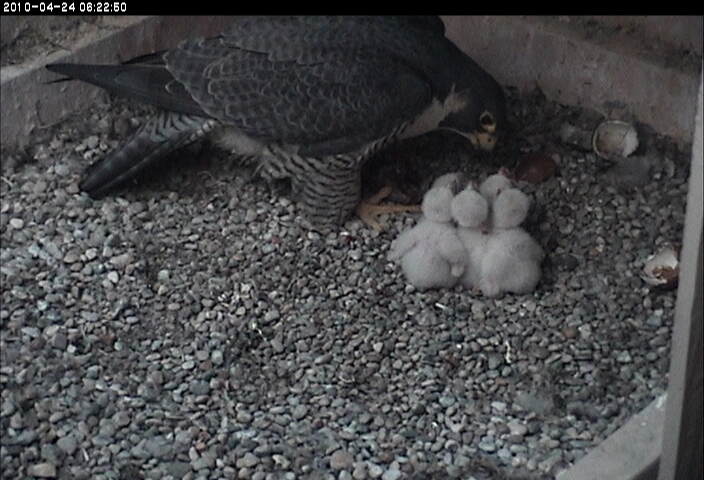
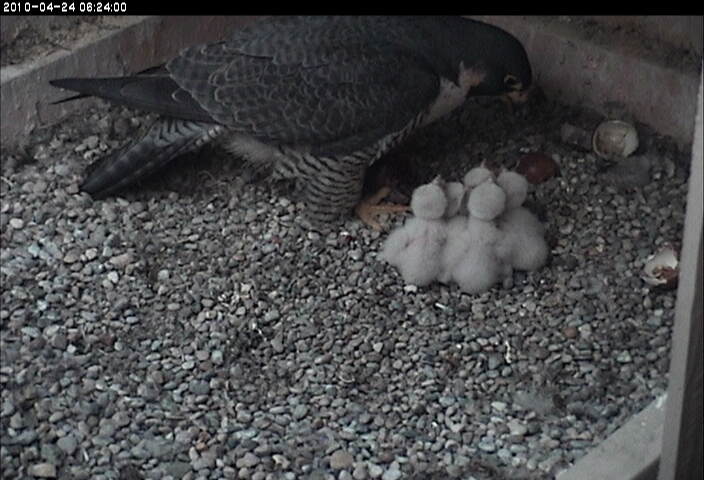

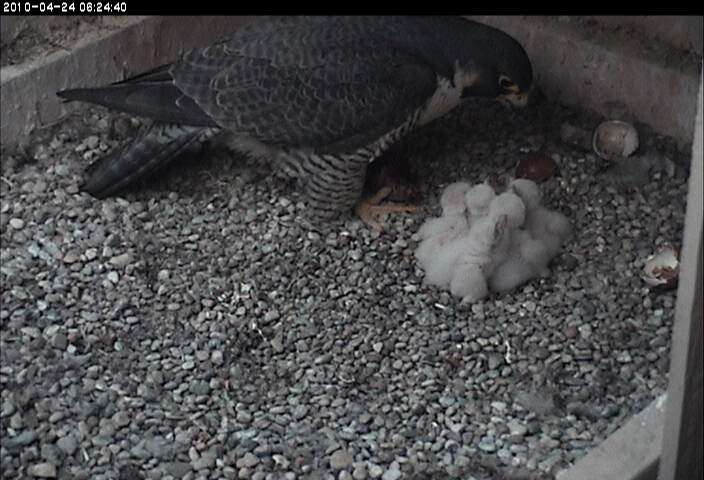
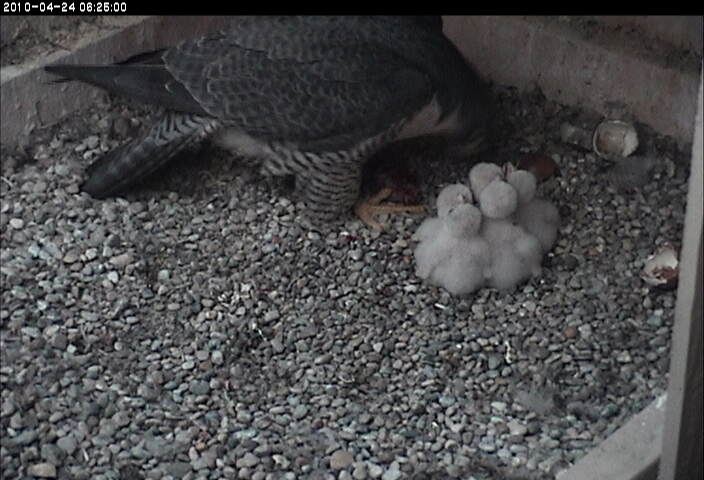
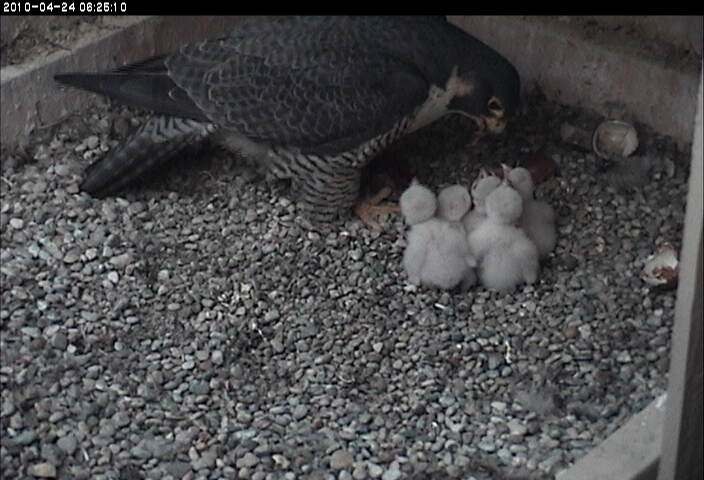
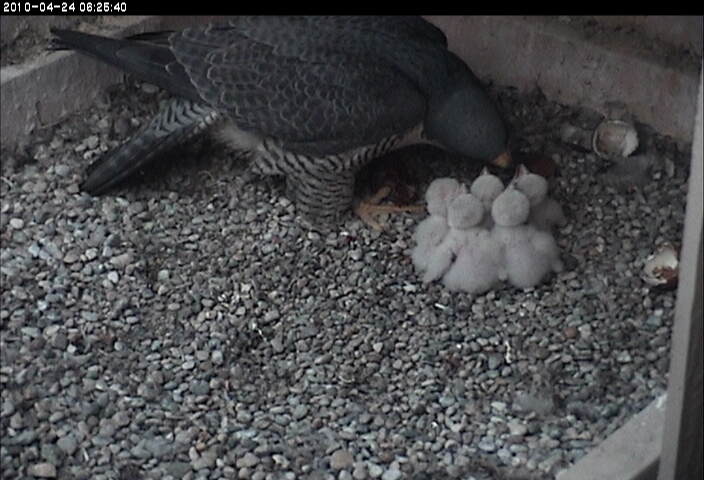
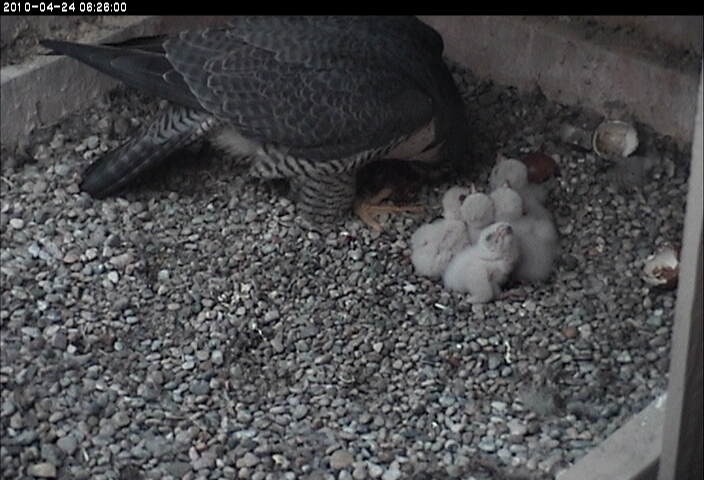
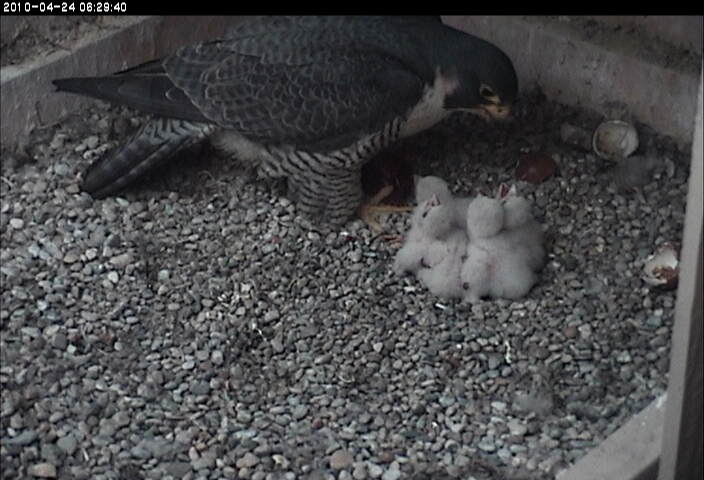

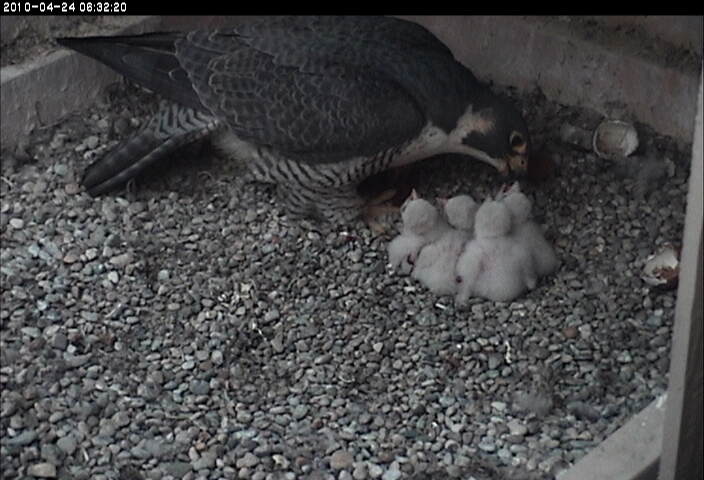
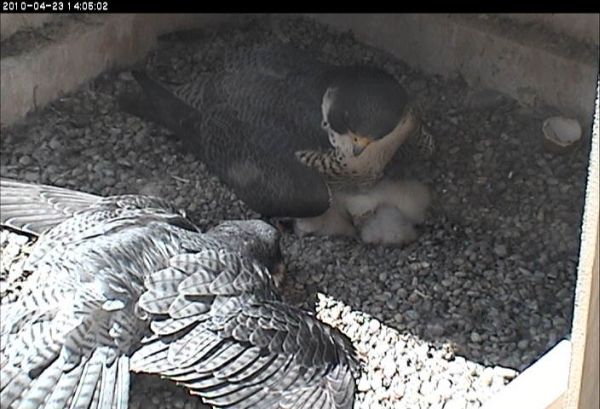
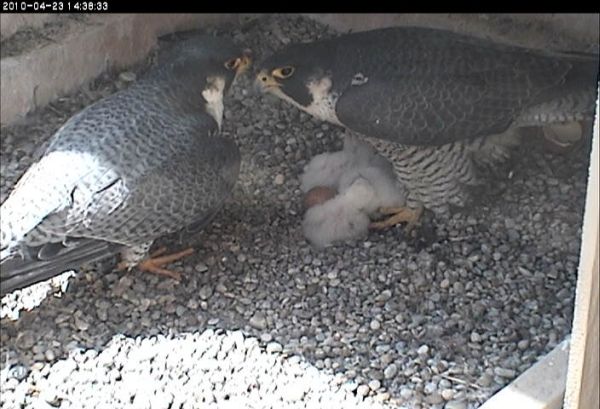
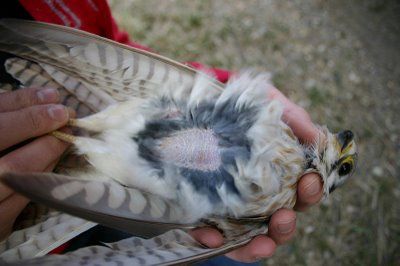
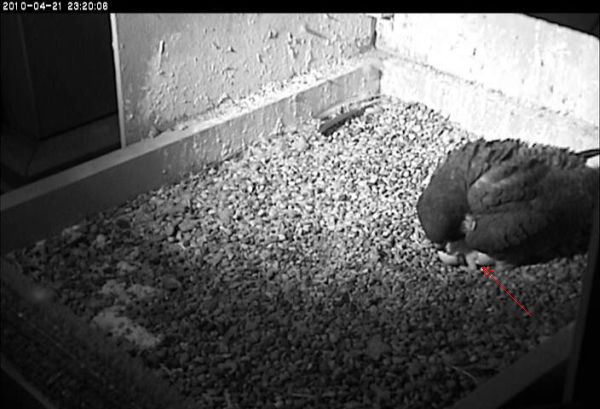
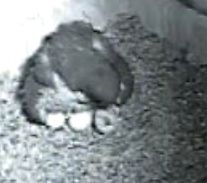 <= Dorothy looks down at the chick still inside the egg shell.
<= Dorothy looks down at the chick still inside the egg shell.